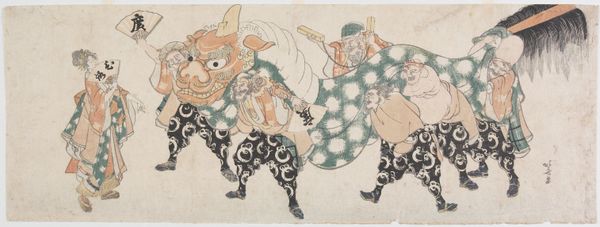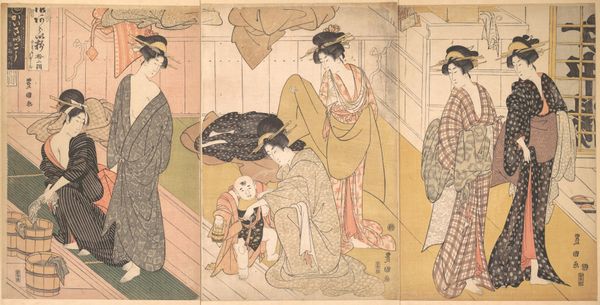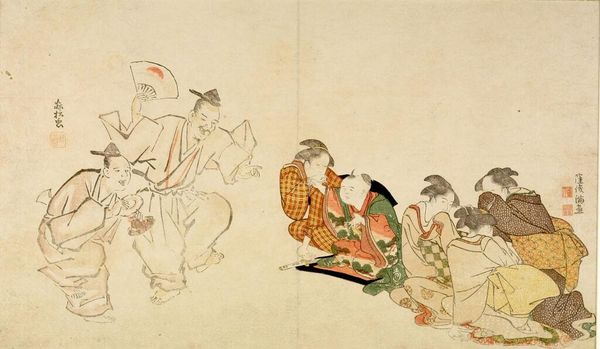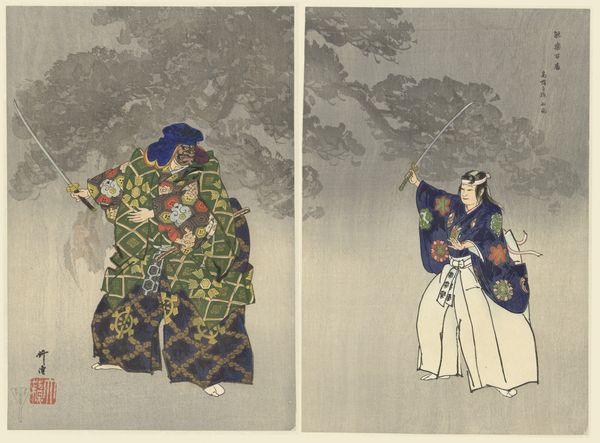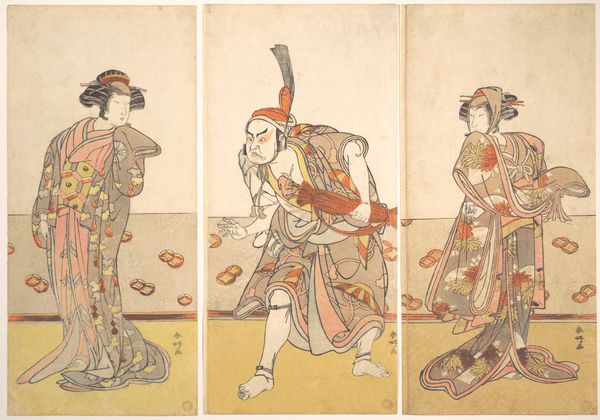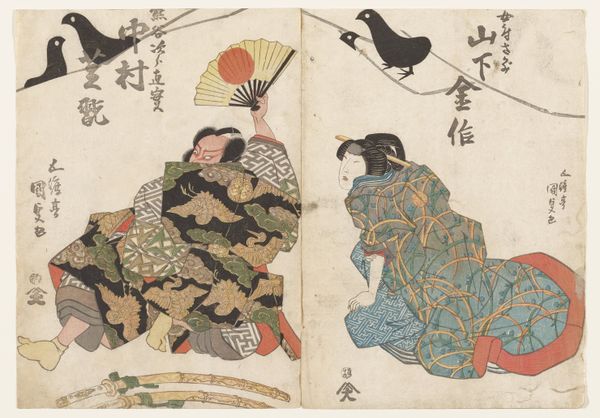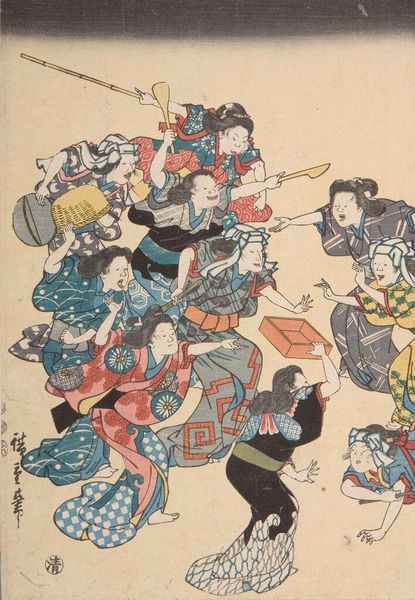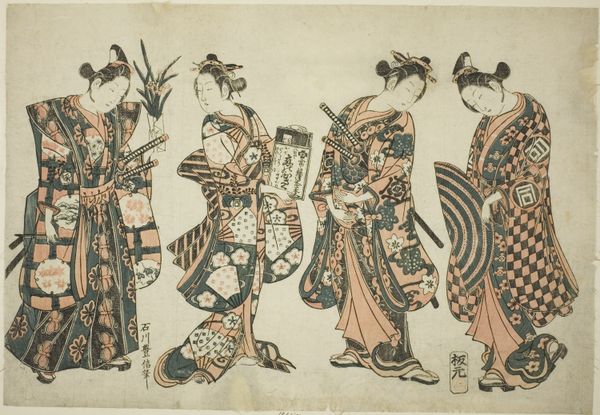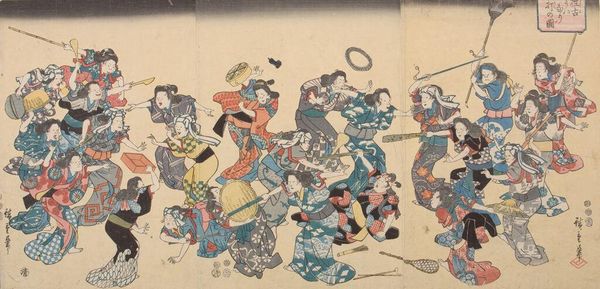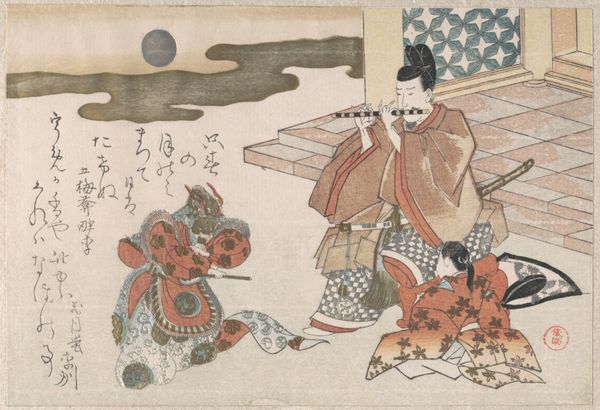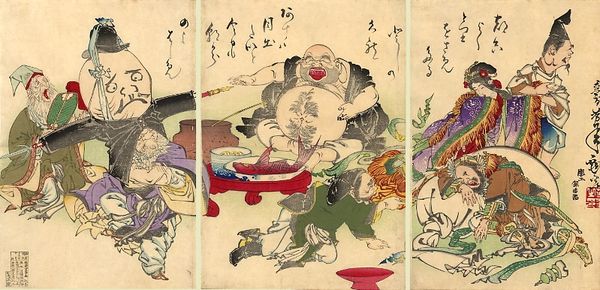
Copyright: Public Domain: Artvee
Editor: This watercolor piece, titled "Dancing" by Kamisaka Sekka, created between 1909 and 1910, presents three figures in what seem to be traditional Japanese robes. The flat colouration and stylistic forms remind me of Ukiyo-e prints, but there is also something distinctly modern about it. What do you see in this piece, Professor? Curator: I see echoes of ancient rituals playing out on a stage designed by Art Nouveau. The robes are not just clothing, they are a symbolic language. The geometric patterns woven into them are indicative of societal standing. They speak to the continuity of tradition amidst the currents of modernisation. How do the dancer’s poses strike you? Editor: They feel staged but restrained at the same time. Their extended arms almost look as if they’re miming flight. Is it a dance that everyone at the time would have understood? Curator: Potentially. Certain movements, certain gestures become encoded within a culture. Here, the slight, deliberate movement is the point. Consider also the symbolism inherent in the objects depicted -- a leaf pattern, the shape of a hat, everything adds to the narrative. Even negative space holds meaning. What narrative do *you* think it tells? Editor: It feels like a story about women negotiating their roles and their identities in a rapidly changing society, trying to balance tradition with modernity, as you say. Curator: Exactly! It's a snapshot of a culture in transition, echoing timeless questions about identity and belonging, which explains why this piece resonates with us still. Editor: It is fascinating to view art as a historical document – so much about a culture can be packed into even a simple scene!
Comments
No comments
Be the first to comment and join the conversation on the ultimate creative platform.
